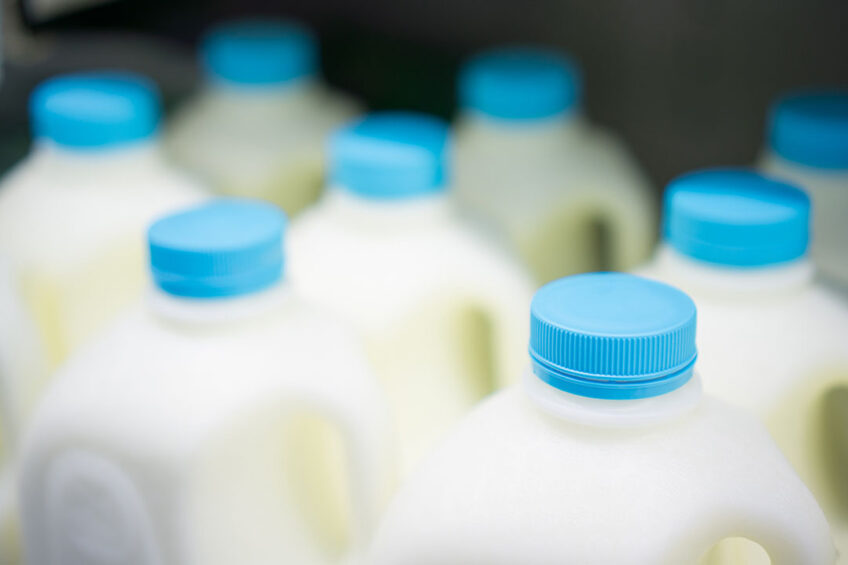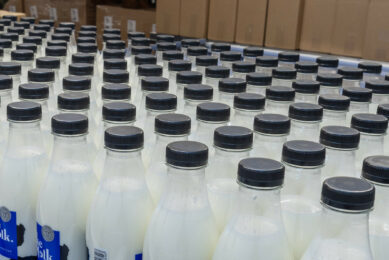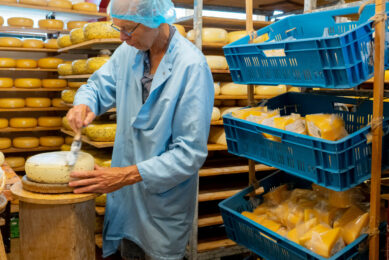How the dairy market in Russia is developing

During 2020, the dairy market in Russia further progressed in breaking the drawdown that has dominated the sector for 6 years since the embargo announcement in 2014. The embargo cut the dairy market by about 45% in value and reduced the number of imported products by half.
Throughout the last 6 years and after more sanctions on Russia, the dairy market has not managed to become competitive on an international level, overcome the small market consolidation or change the fact that low-margin sectors, such as milk and kefir production, remain rather regional players. Milk is an important component for other products, and the small number of significant producers results in high prices in all sectors of the dairy market. The slow development of the Russian dairy market is explained by the long-term return on investment, which is common for the dairy industry, and a basic industrial landscape that simply is not prepared to grow. However, investment in the dairy market is an important topic for Russia, and investments from Western businesses are of particular importance. Similar to other industries, the dairy market – including cheese, butter, milk, kefir and other products – demonstrates a strong need for Western technologies.

Domestic milk production
The 2014 embargo provoked 2 major trends in Russia. On the one hand the dairy market faced a shortage in components and products, which created a serious obstacle to production of ready-for-sale products and left the market half empty. On the other hand, it stimulated local industrial production of milk as an important component for dairy products. So in order to fill the void of imported milk, domestic companies started to develop milk production. According to data from 2014 to 2019, the amount of milk produced grew from 14.3 to 16.9 million tonnes, and producers managed to satisfy the majority of the value chain. However, increased milk production was not enough to deliver competitive price and quality.
The price issue in particular has played a key role during the last 6 years in the development of the dairy market. In Russia, the local demand for dairy products per capita remains low due to high prices. The average per capita dairy consumption in Russia is 158.5kg per year, while in Europe the average is 306kg per year. The Russian economy faced a crisis in 2018, resulting in a strong decline of purchasing power. The situation was repeated in 2020, following the economic effects of the coronavirus crisis. This meant that the Russian dairy market, facing one serious issue after another, did not have a chance to recover. As a result, Russian-made dairy products were, and remain, too expensive for domestic consumers while the economic crisis affected both the dairy sector and the purchasing power of consumers.
The data from 2020 demonstrates that with the increase in milk production and decline in purchasing power, growth went to inventory. In 2019, the amount of imported goods such as butter, cheese and cottage cheese grew. However, a problem is that milk is a difficult product to keep in stock because it is perishable. One other factor that affected the increase in price for raw milk was the measures taken by the government to regulate the market for milk-containing products in order to improve the quality of dairy products.
Foreign companies
Dairy market consolidation in Russia remains low, and milk production is divided as follows: 3.8% EkoNiva (German company), 2.2% government-owned companies, 1.3% Agrokompleks (Russian company) and other companies with less than 0.8% of total milk production. Among milk processors, the leading position is shared between Danone (France) with 7.5% and PepsiCo (USA, known as Wimm Bill Dann for dairy products in Russia) with 7.2%, Molvest (Russian) 2.3%, Kosmos Group (Russian) 2.2% and other companies with less than 2% market share. This means that the dairy market is mostly shaped by a few foreign companies, government companies and numerous small local companies that cannot compete in price with domestic or international companies. This also means that the dairy products on the shelves of most popular chain stores contain mostly products from Danone, Wimm Bill Dan and EkoNiva. Aside from price, an underdeveloped technological base is also an issue for the Russian dairy market. Producers need efficient technologies to produce cheaper products, and most production plants need modernisation. Moreover, many producers are dependent on imported components, like the milk itself.
In order to develop the Russian dairy market, producers need technologies that can produce larger amounts with better quality and that use local components for lower prices; they also need a developed value chain. It is also important to have continuous development, especially at the market establishment stage, because of the slow return on investment and low-margin branches such as kefir and milk production. A good way to develop a stable dairy sector is to bring foreign investors into the Russian market. EkoNiva is a good example of a foreign investor that not only produces diverse dairy products and milk, but also has established its own dairy farming. The strategy of EkoNiva to develop a cluster for producing “made in Russia” dairy products allows local companies to profit by being integrated in some parts of this value chain.
Major improvements
Nevertheless, there are some major improvement trends in the Russian dairy market. Data from 2019 and 2020 demonstrate that many local companies grew more than 30% in terms of production, and local cheese producers showed especially good growth. Russia also gained special permission to export dairy products to Japan, Vietnam and China with a simplified certification process. Export of milk and milk products from Russia continues to grow since 2018: US$ 294 million in 2018, US$ 325 million in 2019 and US$ 380 million in 2020. New markets such as Japan, Vietnam and China may significantly raise export volume.
Consumption trends in the Russian dairy market are mostly driven by growing awareness of healthy food. Unfortunately for milk producers, many customers have eliminated or significantly reduced milk products from their diet. In 2019, consumption of milk and kefir decreased by 2.5% compared to 2018, while demand for cheese and yogurt increased. Moreover, demand for products with healthy additives is growing globally. Western companies are most successful at taking advantage of this trend, as they carefully follow the preferences of customers. For European milk processors, the Russian market provides significant opportunities of new customers, low competition in the market, an approachable labour force and government subsidies. Slow but stable growth in the last 3 years in the Russian dairy market indicates good investment opportunities and readiness for further development.
Author: Evgenia Uvarova, project manager at Schneider Group
Join 13,000+ subscribers
Subscribe to our newsletter to stay updated about all the need-to-know content in the dairy sector, two times a week.










